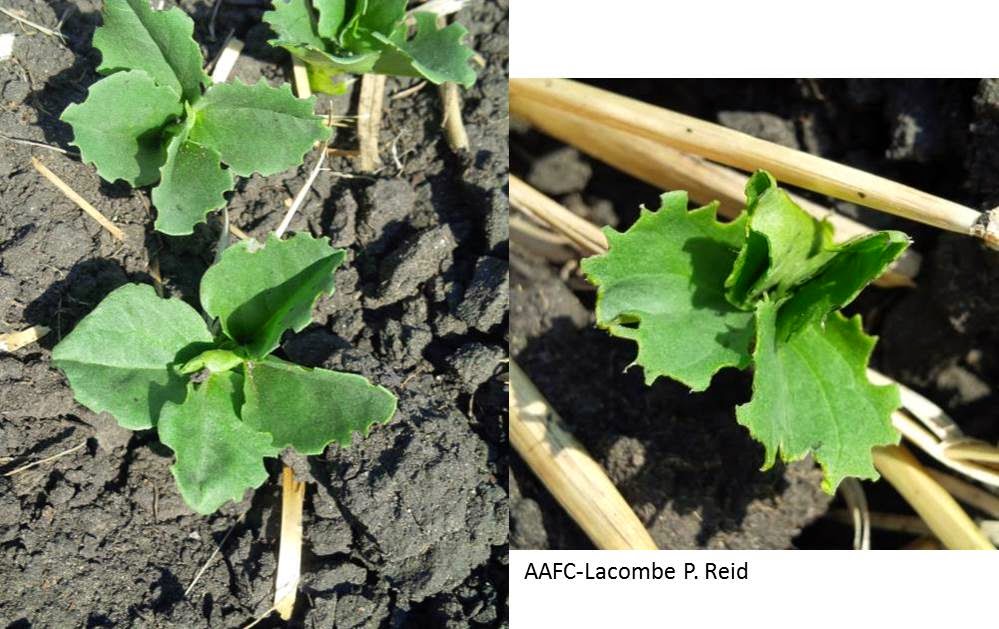Previous reports and surveys performed by Alberta Agriculture and Rural Development’s Meers and Barkley confirmed the presence of Pea leaf weevil (Sitona lineatus) in the Red Deer region recently.
This week, faba bean plots at AAFC-Lacombe were observed to have suffered feeding damage from this introduced weevil species (note notching of leaves in photos below). The damage was characterized by P. Reid as <10% foliage consumed which isn’t expected to affect yield according to H. Carcamo (AAFC-Lethbridge) who also posited that faba beans may tolerate more PLW feeding damage than peas owing to the fact that they produce more nodules and are recognized as the best nitrogen-fixing pulse crop.
***See Insect of the Week from June 1 for more information (description, damage, management options, etc) on the pea leaf weevil from the new Field Crop and Forage pests and their Natural Enemies in Western Canada***

